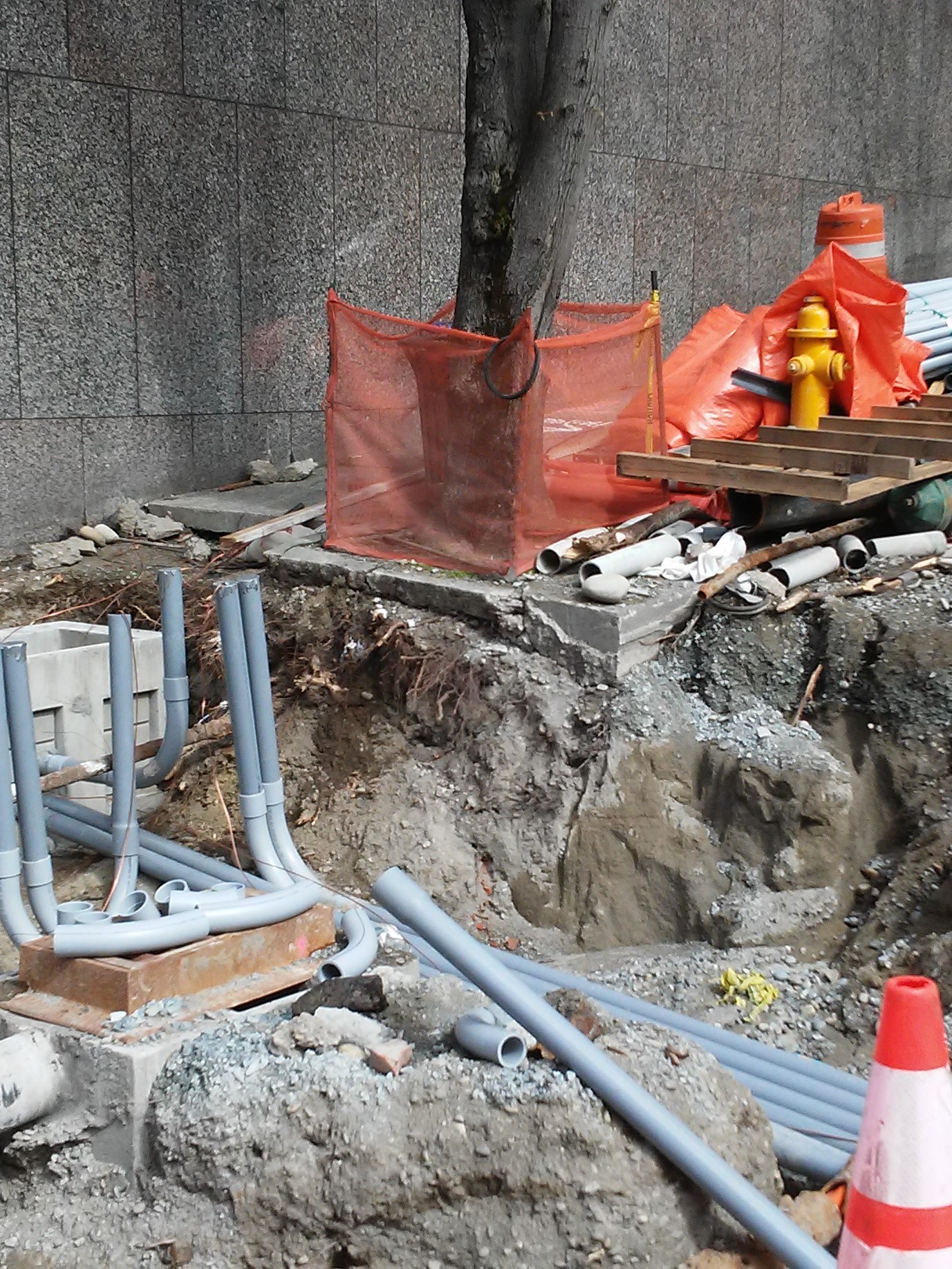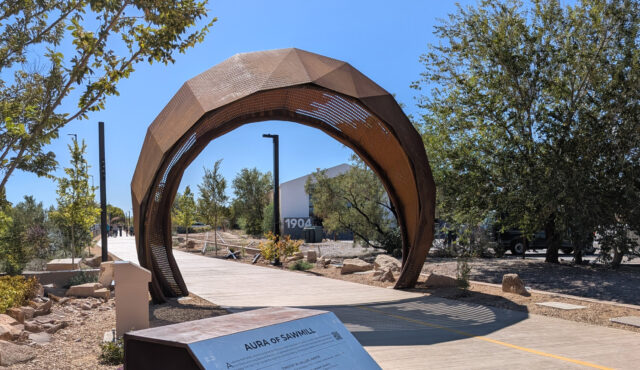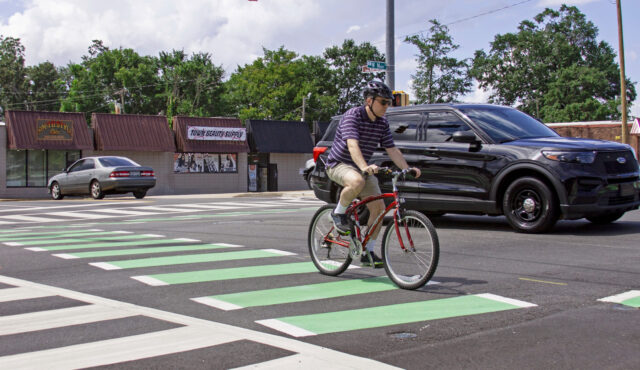During World Landscape Architecture Month 2018, Toole Design Group will be featuring the themes, projects, and staff that form our Landscape Architecture and Urban Design practice. Tune in to our Instagram and Twitter channels for daily updates, features, and more throughout April!
Many of the truly great streets in the world have great trees. An example from my adopted hometown is 2nd Avenue in Seattle, Washington. One of the things that makes this street great are the unique Incense Cedar street trees – coniferous street trees is a sight not seen very often. The addition of planters along the new protected bike lane extension make it even better and more comfortable for people when they walk or bike along the corridor.
The benefits of trees are many: they take in carbon dioxide and release oxygen; they provide shade; they provide beauty in various forms with textures and flowers; they offer shelter and food for animals and insects. On great streets, trees make it more pleasant for people to walk, sit, shop, or mingle. They mitigate the impacts of humans, reducing heat island effects by shading the pavement, and intercepting and reducing stormwater runoff through evapotranspiration and absorption. Good streets use trees to visually narrow the street, slowing down drivers and providing a buffer between the vehicles and pedestrians.
 In urban settings, preserving and increasing our tree canopy is a common challenge for landscape architects. There is a lot of competition for space in our right-of-ways. Take this photo of a street tree adjacent to a street reconstruction project. The tree is situated in a four-foot square tree pit and has had its roots cut back on two sides to accommodate new roadway panels and underground utilities. This is clearly a challenging situation but in many cases, we can do better to preserve our trees. Trees need both their roots and their canopies protected during construction if we want them to not just survive but add to and thrive in our complex urban streetscapes.
In urban settings, preserving and increasing our tree canopy is a common challenge for landscape architects. There is a lot of competition for space in our right-of-ways. Take this photo of a street tree adjacent to a street reconstruction project. The tree is situated in a four-foot square tree pit and has had its roots cut back on two sides to accommodate new roadway panels and underground utilities. This is clearly a challenging situation but in many cases, we can do better to preserve our trees. Trees need both their roots and their canopies protected during construction if we want them to not just survive but add to and thrive in our complex urban streetscapes.
We’ve come a long way since the days of planting in four-foot square tree pits and moving on to the next project. We now know that trees require more soil volume if they are to flourish, grow to their potential, and contribute to the community in so many amazing ways. Providing trees adequate soil volume is an investment, not just in our trees, but in our streets, communities, stormwater management systems, and safety programs. Great streets have great trees, and we can help them thrive with good planning, design, and landscape architecture.



